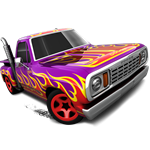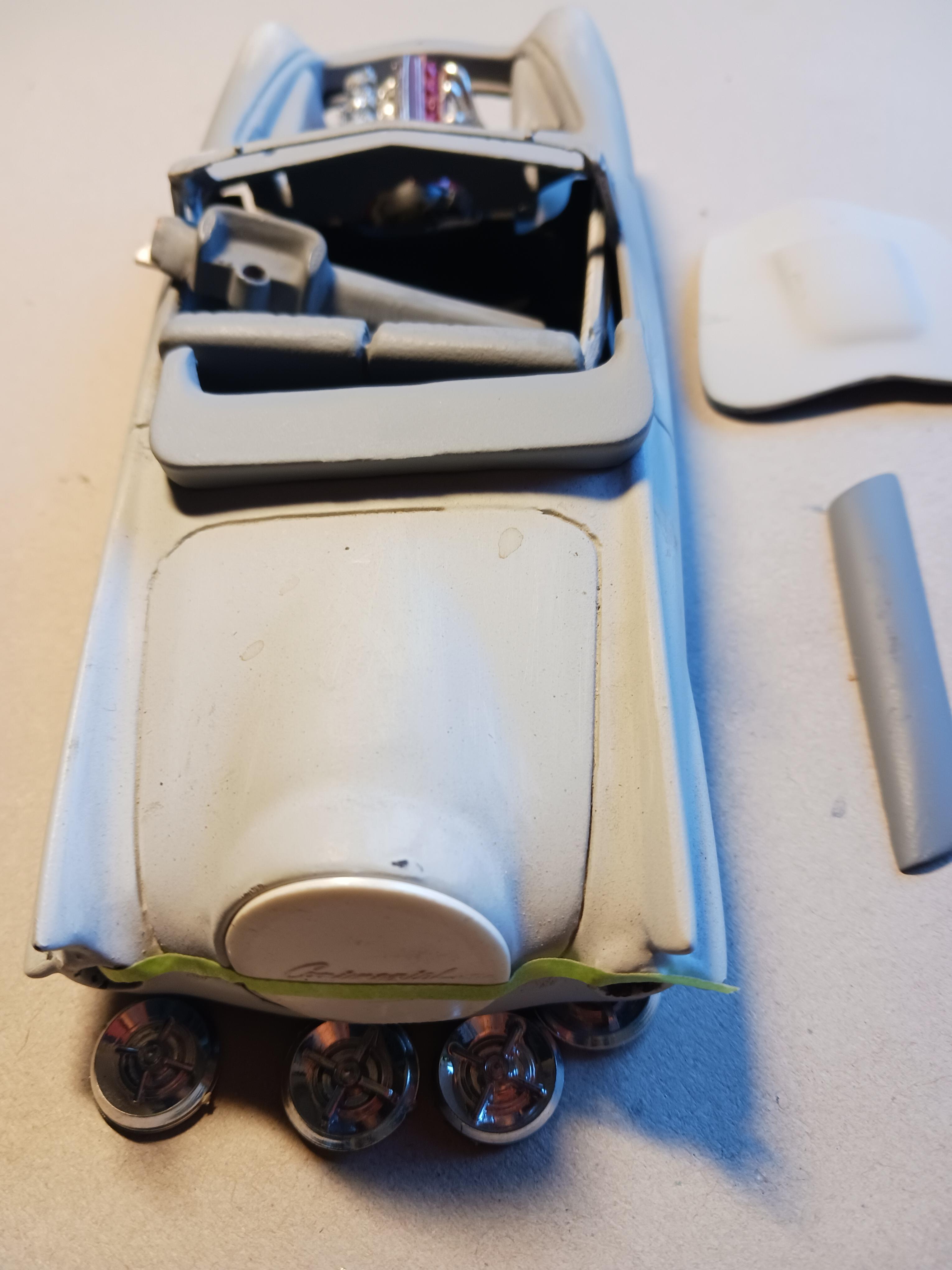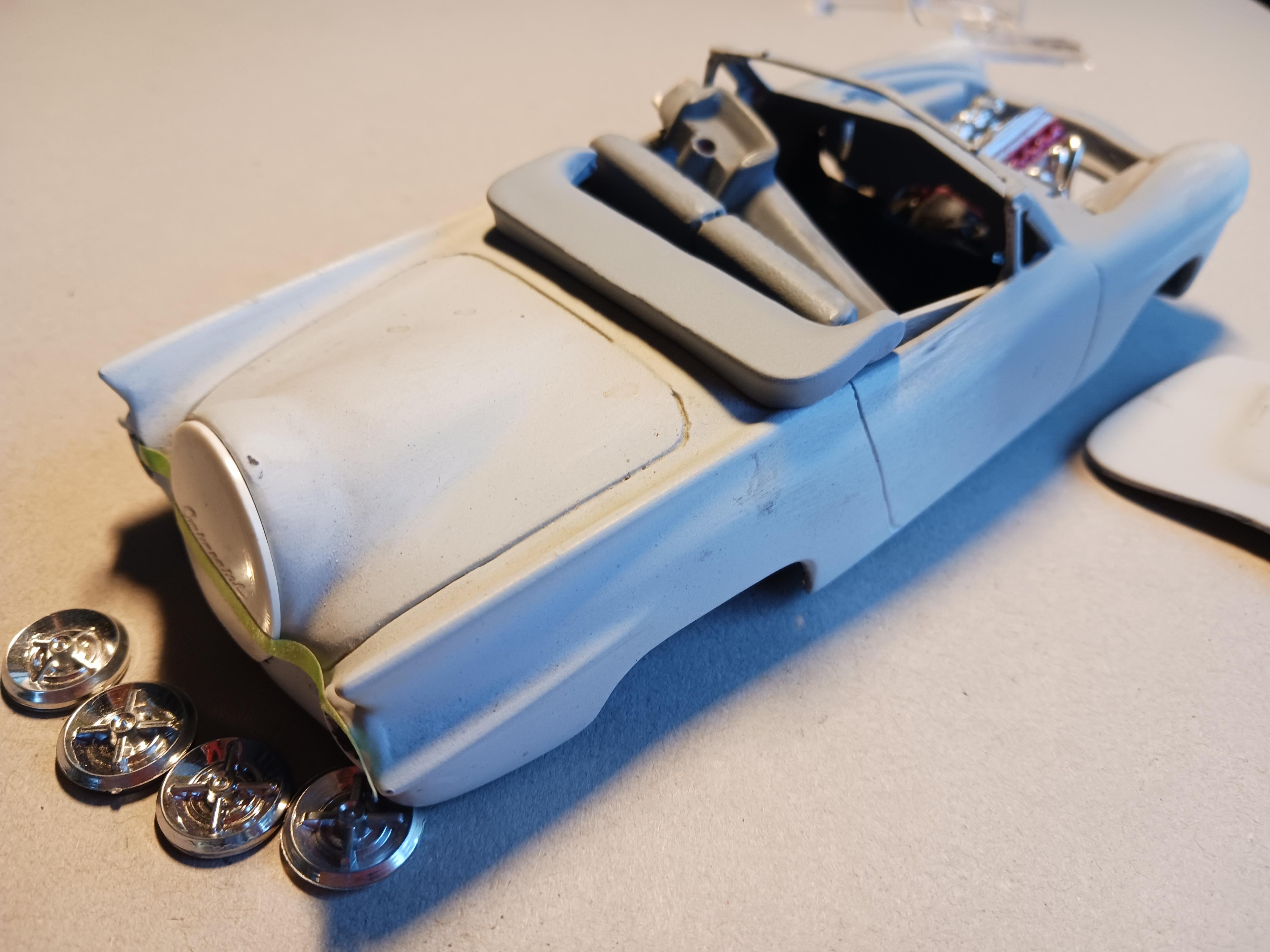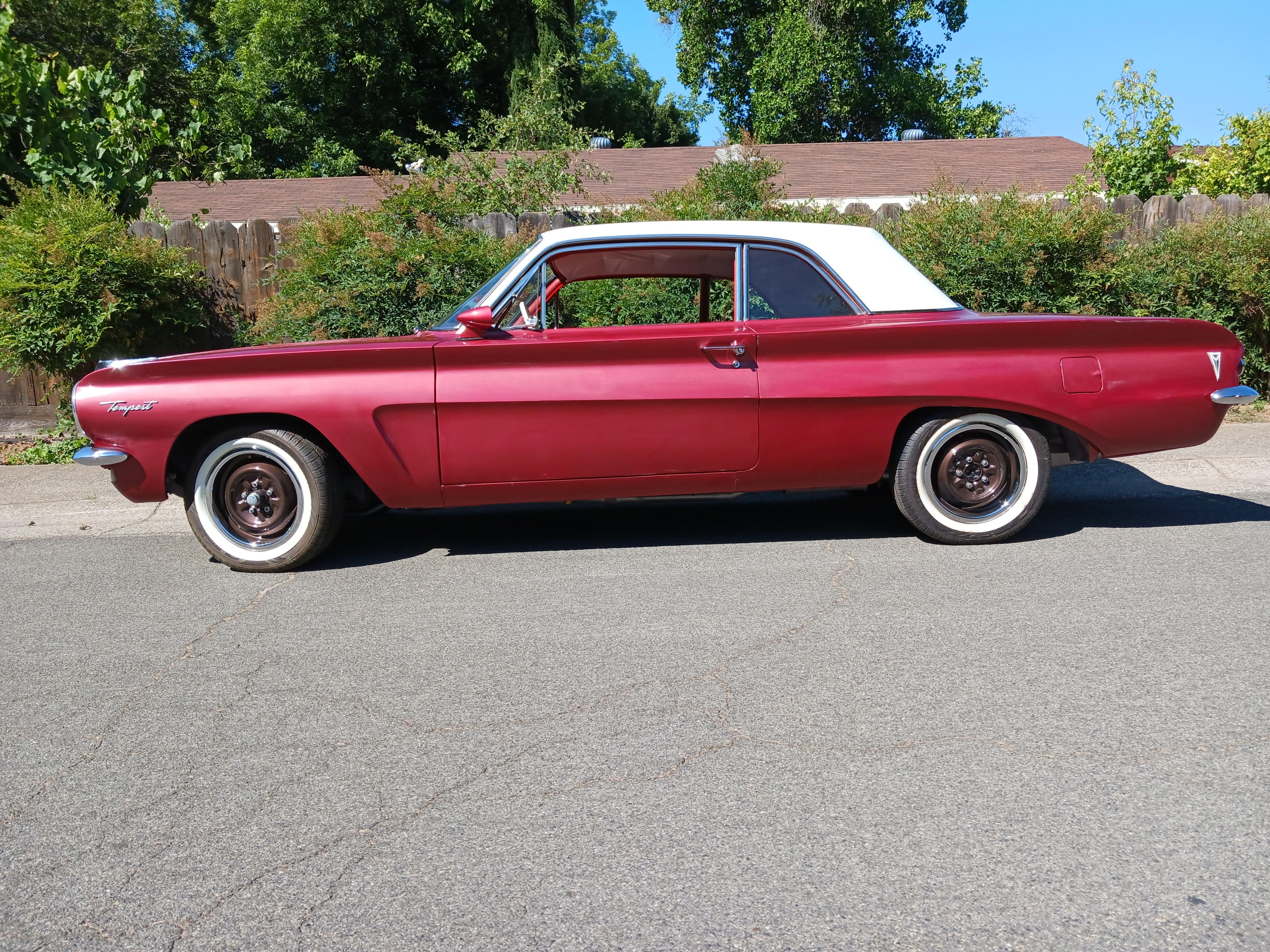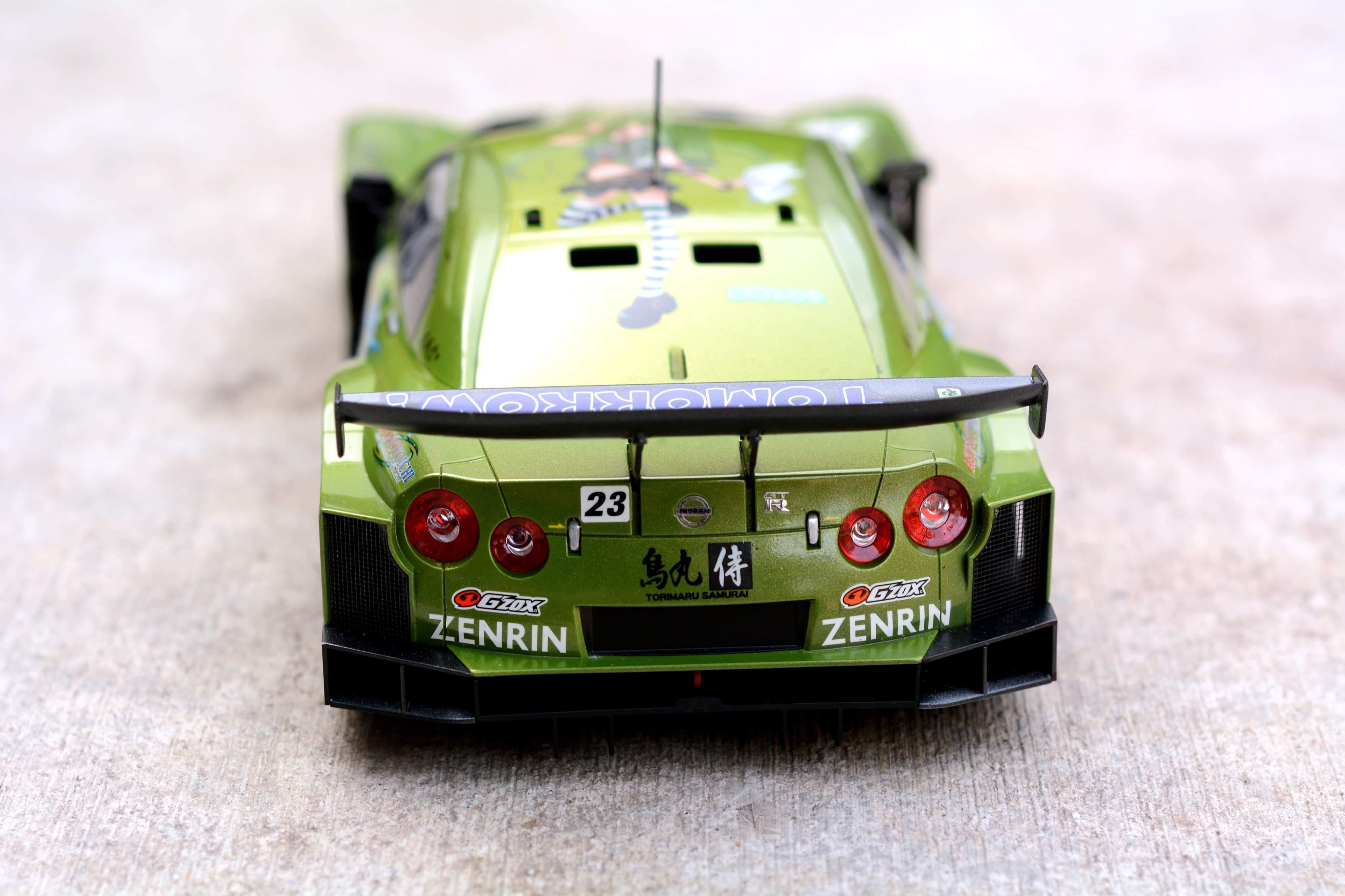
Wickersham Humble
Members-
Posts
259 -
Joined
-
Last visited
About Wickersham Humble
- Birthday 08/21/1945
Previous Fields
-
Are You Human?
yes
-
Scale I Build
1/24-25, 1/16
Contact Methods
-
Website URL
none
-
Yahoo
obsolete, hacked
-
Facebook
Wick Humble
Profile Information
-
Full Name
James Wickersham Humble
Recent Profile Visitors
2,162 profile views
Wickersham Humble's Achievements

MCM Avid Poster (5/6)
-
Mike, not questioning your choice! Our clan had a new '62 Catalina 9-pass wagon, and I can't recall anything about it's chassis, despite working on it numerous times at the Texaco station where I labored -- including putting on 'Pacemaker' glass-pak mufflers in '64. My anniversary gift to my Mom and Step-dad, oc, the previous one being baby-moon hubcaps! ($5.00 per set, with attachment clips; House of Chrome ad in HRM; now the clips cost $12 each!!!) Naturally, Xmas of '62, I bought all my sibs (including step-sisters) Revell model kits, which I expected them to let me assemble; all MoPars! Still have two of 'em! My AMT annual was a B'ville which I 'customized' and thought I'd converted to a Catalina. Stripped and put back to stock as much as possible before the chassis shortening adventure, etc. still not finished. I was thinking black/gold Yunick style, but a street machine. I also have an original annual '64 Goat hardtop kit, unbuilt; thinking of doing it in PMD blue-green engine color, but using the Revell chromed 421 'parts pak' mill.... gauche? I did my old annual B'ville as a GP, painted my version of Nocturne Blue in honor of my late bro-in-law's '63 Catalina HT, 389/4-speed which let he go in favor of a black Firebirdy 400; I preferred the Cat! I took my first driver's license test in our old '55 model 870 8-pass wagon with the Chevy rear fenders they used in that year and '56. I surreptitious tried the tail-lites on my '55 Chevy, and the reverse; fit perfectly, but looked ungood. Happy season! Wick
-
You make me want to move my '61's to the top of my build list!! Question; why do you paint the suspension in a lighter, contrasting color? Was that original on the drag car, or ?? Interesting that PMD used the 'infamous' X-frame with Chevy, et al, until '59 or '60, then went to the rectangular, perimeter version. The X, like the 3X2 carbs, began with Cadillac. I have an Offy 2X2 intake for my 215, but am now running a Rochester 4GC 4-bbl. on an aluminum Olds manifold. The 2X2 has no chokes, runs synchronized linkage; for racing, I guess -- would look good on a street rod. I like my '61 'Tampax' but wish it were a Catalina/Ventura coupe! Wick
-
I thought BMF was a revelation when it was introduced (then Molotow, etc. seemed like the answer to a maiden's prayer) but it certainly isn't foolproof. I'm the fool...] Having BMF that is pretty 'fresh' seems to be the key, if there is one? And skill; it's amazing the fit and finish that some of you guys get! Wick
-
Do I detect a trend in these admissions? It strikes a chord with me; on some occasions, there is a hesitation to finish the project because: 1.) the finished model(or my redesign concept) might not turn out to be the show-stopper that I'd intended it to be, but in some respects a big disappointment, or B.) that my vision (or skills) may not actually be up to the challenge I've set, and 'refer back to item 1.)' ! Finding parts in the market or the forums that will allow the triumphant completion of a kit project is a big thrill, obviously, after one has searched for literally years. Acquiring a new skill of accessing a new service in the hobby that facilitates the same good result is very satisfying. Sometimes just swapping for a better body (despite nostalgic connections with the one I started with, perhaps sixty years ago, can boost a good build into glorious completion, too. Note: some of the models/build sequences seen in MCM are at once inspiring, and then frustrating because of their perfection -- and I know for certain that despite my original high hopes, I simply can't build at that masterful level. Now that I'm ancient, I find I must just build for my own satisfaction, however limited. Being too ambitious is a corollary problem, for me! What did Robert Burns say ...? But, sometimes in my case, it's comes down to being chicken to risk finishing up a kit, thus acknowledging that all the time and brain-strain that I'd invested would have been far better spent on a new build, especially one that had been tempting me for some time!! I"ve had that same creepy feeling when looking through my drawings and printmaking attempts: that what is there on the paper is the best I'm gonna' get on that inspiration. I've posted probably too much on the Auto Art forum, but in my art stash probably have potentially much better material still ready for shading, or color, or some other necessary adjunct. Maybe now I'll face up to reality and get some of those 'works of art' done -- for better or worse! Wick PS/ At least I'm in contention for nightmare unfinished kit projects held in limbo for the longest time? One or two at least 65 years now!
-
These are pics of the '49 Ford that has been bedeviling my workbench the worst though not the longest, I find. I have a Stombecker 'Scarab' racer (actually was a kit with motorization optional) from 1959 or '60 that is only half finished; somehow I even saved the complete decal sheet intact! Bill E. is making replica wheels for it right now; Halibrands. Ford: I tried to keep it really 'fifties style, but somehow a '60 Valiant dash was grafted on, and I think the Buick mill is from the Tommy Ivo dragster kit. Shown are sections from the body cut first longitudinally, and in desperation vertically to get a pleasing shape. Fitting it's a 'lead sled' style; the car is mostly Bondo and layers of epoxy primer (PPG). At least the Continental Kit spare is from a real 1960 Continental! The two stles of flipper caps are from JoHan, the classic Dodge Lancer style, saved for about 65 years! Shall I move it to the top of the 'to do' list, or back into limbo? Wick
-
If I were to hike out to my shop/office, I could tell you what Pontiac called the maroon that most of us used the Chevy name for, 'Honduras'. Popular!! I had my '51 Ford club coupe cherried out and sprayed that color, minus the blue toners; was working part time for the body shop owner, etc. Very bright, 'cherry' red; loved it! I gave a substantial portion of my pint to my nephew, who does very spectacular builds, and can get about five more kits (should I want to load up my shelves to that degree with red cars) out of the can. JE can be catalyzed or sprayed from the can mix. One of my '61 kits will get a coat, one might get Fireball's Yunick garage gold and black. I once interviewed Smokey Yunick for an article in Special Interest Autos Mag, colorful as advertised! When we finished the chat, he said 'What magazine was that?" and I told him. Said "Never heard of it!!" Oh well... My bro had made a deal about 1966 for a very nice '61 Cat bubble-top, and went to the bank to get the money (about $1200, back then) and another salesman had let a local hillbilly drive it in his absence; of course the hick took it to our 'Dead Man's Curve"... and rolled it! Bro almost duked the salesman out! SUCH a pretty design! I have a '61 Pontiac coupe, ('Dawn Firemist" but came out more cinnamon) but it's a Tempest, the Buick alloy V-8 model, very rare as Buick didn't want to cough up it's engines to another division! Can't afford a big Poncho hardtop nowadays!! And I looked for about 3 years! Wick Family car then was a '62 Catalina wagon, not bad.
-
In '61, I built the annual kit as a mild custom, but later recanted and dismantled it. I had to have all the big trim and bumpers replaced, etc. Of course, it was a Bonneville coupe, with the longer trunk (Bonne and Star Chief were longer, Catalina and upgraded Ventura were shorter) but had the same wheelbase. The thing is still in primer because I jumped to the conclusion that the extra length was in the door area (dumb wrong!) and before grafting a '62 BelAir 'bubble top' roof onto it, I sliced about four scale inches out behind the door. Natually the roof didn't fit right... and now in primer it looks rakish, but incorrect as all hell! Of course, the 1/1 car was/is one of my holy grails, but their beauty and performance put them out of my price range a few decades ago! Still one of my favorite postwar cars; only '53-54 Studebaker coupes and classic '55 Chevy two-doors come ahead of it. I bought the Mobius kit ten years ago, and admired it's updated features, but haven't even really begun to build it! My first impression of the kit was that the transition between the lower grille and bumper is too large/deep, but that's minor... I bought a pint of Metallic Garnet PPG JE paint to shoot it (and my converted '49 Ford to '51 Ford club coupe, to resemble my old 1/1 college ride) because you're right, the maroon metallic of that year at GM was a great paint color. The paint cost only about forty bucks! Oops -- should ask the tab before ordering custom colors at a paint store, even if you work there! I was looking for Fireball Roberts #22 Catalina decals, but unless they've been run off again, I came up dry. Any ideas? Love those '61s! Wick
-
Every modeler has a bete noir, an unfinished project kit that defies completion every time you fearfully drag it out! Or, maybe more than one -- poor souls! Some kit that was begun with high hopes, great expectations of a distinguished, innovative build, but now for whatever reason, refuses to come together for you? Most of these have interesting stories (why you didn't just give up on it and consign it to the parts box might be one) and occasionally, a happy ending. Tell me about yours! What kit inspired it? How long ago was it begun? What stopped the process? Skills? Parts availability? Misguided cutting or cementing? Or, just a design dead-end, something that seems misbegotten now, and not deserving of a full completion? And, now why can't you just toss it? If you're like me, you've had several, and possibly like me you've seen your modeling career approach 'the red zone of life' and began forcing the issue on a few old kits. One of mine is an original year AMT '49 Ford Coupe that was quickly finished back in '62, then in the early '80's, dismantled to re-do a disappointing paint job. The candy blue rat-can treatment I'd done over shaded gold and white just didn't charm me anymore, and a friend who also did 1/1 body work came over with a pint of a Chrysler glam color that had been catalyzed and offered it, which I accepted --since the body had been stripped and primered already. Already in the midst of some big-car bodywork, I put the '49 on a painting stand, fired up my DeVilbis EGA gun, and shot the body and hood, which came out very nicely. Then -- as the day was cold, I moved an infrared lamp over to keep it warm and aide the curing process. Long story shortened; the light stand's adjuster slipped, unbeknownst to me, and neatly melted the coupe's roof into a blog, taking some fender with it as well! I could't bear to toss it, so I hacked of the roof the next day, and tossed it back into a box with its interior, etc. It must have been twenty years later I uncovered the project, kicked the spiders out, and decided to salvage it as a 'fifties lead-sled 'kustom', a natural idea...? I did a 1/4in. section job, which helped in the salvaging of the melted residue oft the fender, added '55 Chevy front-fender tops and 'eyebrows', pancaked the hood, created a 'catfish mouth' grille opening that would take a Corvair blade bumper, dug up real 'fifteis cruiser skirts (from a '60 AMT kit, preserved in my stash), ditto for the rear treatment, made the cat's-eye tailights round, and added the piece d'resistance, a huge jet exhaust on the trunk lid. This because I'd eventually eliminated the rear seat area, and used half-round to make a full tuck n' roll interior. The windshield frame had vanished with the melted roof, so that became a bubble style. I also got out old JoHan 'flipper' wheel covers and a lonely Buick 'Nailhead' V-8 to go along. But, then I mocked it up, and was chagrined; all that work hadn't produced much more than a parody of an olde tyme custom -- so now it sits. I'm trying to decide if a really radical paint scheme would save the kit, or maybe just give it up as a bad job. When I post pics of it, maybe I'll get some feedback. Frankly, I'm tempted to do a version of the SoCal coupe scheme, only maybe with white and metallic blue, with white-blue alternating upholstery stripes. Or, just fall back on finishing the twenty kits or so I've vowed to complete before my show closes for good. What is lurking in a musty box in your closets? Bring out your dead! ? Wick
-
In the class of car kits I build -- mostly all old annual kits back to 1960 that I squirreled away back then -- I have struggled to make hood/trunk and rarely door hinges like I've seen exampled in the model press. Mostly I do the 'bent aluminum jewelry wire' hinges, which are not too hard to retrofit to very old promo-style bodies (especially ones from ancient 'curbside' bodies where the hood has to be cut open, engine compartment details created, etc.) and mostly have an acceptable look on the show tables. However, engineering such using wire and styrene tubing has it's inherent limitations, the biggest being that the don't appear at all like the stock 1/1 hinge. I like having the hood/trunk lid appear natural and attractive in both open and closed mode, which isn't always a slam-dunk with the wire/tube fabbed hinge setup; mostly they look okay when open, but don't settle down into the lip of the cut-out opening I have to create. Eg., without the hinge, the part can be made to nestle down into the cavity with some conviction and give a good, smooth appearance, like the 1/1 car. But after mounting on the wire hinge, where it looks okay open (showing off what I create for engine, etc., or trunk junk) it no longer seems entirely congruent with the opening from whence it sprang -- so to speak. This is exacerbated by the fact that hood/trunk has to nest happily on two different planes, horizontal and vertical. A problem! What I came up with (finally getting to the tip) is to replace the jewelry wire (or copper, whatever you use) with the lighter gauge of solder wire, and it sure works better! Aluminum is pretty malleable, and bends well enough, but the hinge pieces I have been 'engineering' often as not fight the open-shut fit, and don't give a great appearance. Even after a lot of trial & error fitting, using wire-bender pliers and the rest, getting the part to fold down into the opening acceptably takes more time/effort that I may be worth in the end. Because every kit has it's own shapes and limitations for space, no one design of hinge fits all, certainly. But using light solder wire, usually one can get a better shut-fit because the metal can be 'finessed' to a better conformation than aluminum/copper/etc. and there isn't appreciable down-side, either. Trying to massage the stiff-wire hinge often as not results in one of the styrene tube mountings breaking loose from the kit body, or paint damage in my experience. This simple change can prevent that. Amongst the hundreds of tips & techniques, someone may (must!) have hit upon this trick, and suggested it, I suppose; I didn't see it. Now, if your elite build requires truly accurate scale hinges, this isn't for you. Frankly, I've seen very few hood/trunk hinges that both work well open/shut and look scale realistic, but... You undoubtedly have the very light guage solder wire on your workbench; give it a try. Wick [sorry, not pics]
-
I'm going to always have to be satisfied with not equaling the finishes gained by the famous Steven G., but for my advanced age and stage of development, etc. I come pretty close to being satisfied with my finished product. :-<) I'd still like to do better; take my stuff up a level -- but that seems to be slipping away. Steve, it appears from the chrome detail on that Merc that you have this all dialed in; tell me, do you foil first, then paint, and then work back through the finish to get that almost 1/1-looking result? I tried that on a couple of kits, and seemingly didn't really have the technique! I went back to dry-brushing, which is often iffy... What 'tool' does one use to remove the microns of paint to reveal the chrome logos, etc.? It's kinda' depressing, at 80, to realize I really can't see well enough to do fine detail work anymore (I passed my peak and didn't even realize it!) even using a loup or magnifying glass -- and then the eye/hand coordination lets me down as well. Beware; enjoy your relative youth, as old age (if you survive to that level) has only bad surprises for a modeler! I still have a project list of about 20 kits and kit mutations (I always modify and customize) that I hope to finish before the final bell. Pretty focusing influence, anyhow. Natuarally, my kit conversions (R-R roadster and Cad V-6 roadster to Harry Miller street machines, c. 1932, and a twin-v-16 Bonneville racer, for instance) loom before me as fun challenges, but real time blotters. I think y'all know the type! About done doing models of cars I have owned, though! Kudos, master modelers; I envy your patience and skill. Thanks for the inspiration, too. Hope I haven't been beating the sad tom-toms overmuch?! Ole' Wick
-
1961 Pontiac Tempest annual kit sought
Wickersham Humble replied to Wickersham Humble's topic in Wanted!
Yep, knew that, and thanks for good wishes! Pontiac dropped the Buick version by '63, used underbored iron 389 at 336-cu.in. had to change to 326 in '64-66. Still labeled '63 as '326' though! Call me 'Wick', thx! -
I want to build a conversion of the old annual '61 Tempest promo-style kit into my '61 V-8 coupe, and will be generous in swapping to get some raw materials; a gloo bomb or old build kit would suffice, as I'll be changing the roof, doors, etc. Also posted in "Wanted" with not much results, yet. Anything out there in MCM land? Olde Wick
-
Nothing surprises old me anymore... 'been down so long, it's starting to look like up to me?" I can't seem to get anything posted in other settings because of the so-called 'Community Standards' filter -- which is a good practice -- but deleting words one thinks of as offensive... surely doesn't lead one to understand just what they're sensitive about; and sometimes it posts anyway! Wick, the Perpetually Confused
-
Occasionally, in the routine process of chiming in on forum topics sent to me, I get "Oops, that page can't be found" message, but no reason given, etc. Anyone know what's up with that? Kinda' disconcerting, as it seems like the system is melting down at the edges. Usually, over quite a number of years, it is absolutely reliable and one of the easiest to use -- great; as I'm elder not too sharp at digital BLAH_BLAH_BLAH_BLAH... ! Anyone else having this problem? Any diagnosis? I saved my comment text, to try again. Wick


